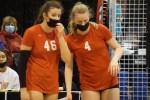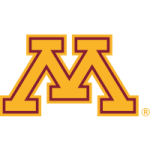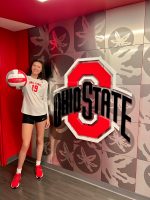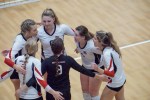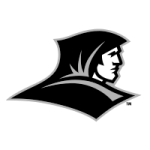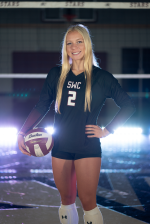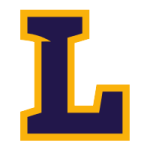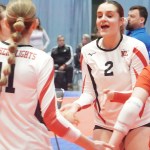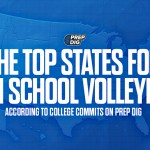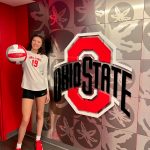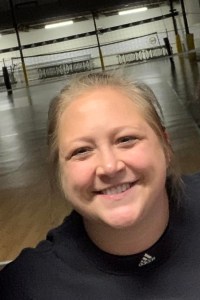Recruiting 101 | Part I: Things to Consider
The recruiting process can be both an exciting and stressful time for an athlete. The thought of future opportunities to play this sport provide great motivation while the uncertainty of where that will be can be a daunting journey given an athlete’s goals and criteria for a school. Then there is the hope that the prospect’s interests match the search and the needs of the college volleyball program in return.
This two-part series provides some useful information that aims to help volleyball athletes and their parents understand recruiting better to help make it a positive and rewarding experience. Part I provides some aspects for consideration as athletes prepare to begin and endure the process. The second and final article will focus on key aspects of communication with coaches and developing effective player profiles and video to market the athlete to the college volleyball community.
Seven Tips to Consider Throughout the Recruiting Process
Know what your options are at the next level.
There are many ways one can continue their volleyball career as an athlete at the next level. Sure, the Division I level in the NCAA gets all the hype and recognition but there are a few things to understand that may help to broaden your perspective and search. First, DI schools make up about one-third of the NCAA’s member institutions offering women’s volleyball. Division III is the largest. Considering schools beyond DI creates a much broader landscape of schools to choose from. Adding in NAIA and two-year options increases that further. There are several types of schools and several levels of volleyball. There are big schools and small schools and schools in between. And there are public schools and private schools that have their own admission standards and requirements. Next, playing volleyball at the next level is just one aspect that makes up the college experience. The life of a student-athlete can be demanding and requires sound commitment to create balance across all responsibilities and to sustain mental and physical health as well as academic eligibility. As there are limited opportunities to continue playing volleyball beyond college it is in the best interest of the student-athlete to find a school where they will feel connected academically as a resource to prepare them for the future.
The percentage of prep athletes that transition to the NCAA DI level is a small portion of all athletes when combined with all other divisions and levels. The percentage gets even smaller when considering scholarships that are available. This reality is an important perspective to maintain as most athletes that transition to college volleyball opportunities will do so not at the DI level and without a full scholarship. Broadening the scope will open up so many more opportunities to identify the right combination of athletic and academic programs among other factors that are important to the individual prospect when seeking a college.
A high level is a high level.
Having coached college volleyball within DI, DII, DIII and NAIA programs, I can attest that there is high level, competitive, and fundamentally skilled volleyball at all of these levels. Each season there are athletes and teams that are performing some of the best volleyball at all of these levels across the country and vying for conference and national championships in their respective divisions. A great sense of pride and accomplishment can be felt at any level if the commitment is in place to be the best regardless of where this is happening. Additionally, there is coaching leadership and academic programming among all of these levels and types of schools that continuously contribute to some of the highest quality and most exciting experiences for student-athletes in both traditional and unique ways.
Activate what you are looking for to your advantage.
I believe that the better the athlete understands what they are looking for, the better the search process. The idea is to find the best fit possible with the final decision. The volleyball program is looking for athletes that best fit their program and culture. It should be the mindset of the athlete to do the same regarding what they want their experience to be about. Certainly, one may not be able to find a school that checks every single box, but by having an understanding of the things that will contribute to a happy and rewarding experience will help prospects make decisions about schools as they are being compared to one another. I have seen some athletes develop ‘pros’ and ‘cons’ lists. I have seen athletes learn more by ‘doing’, through visits and conversations. Whatever the athlete’s process, the more they know about their interests and what they are looking for, this has potential to lead to a more meaningful and fruitful experience and the right institution emerging from the pile in a more organic manner.
Understand the rules.
Before embarking on the journey it is important for athletes and their parents to learn some of the rules of recruiting. Rules will vary by division and affiliation (i.e. NCAA, NAIA, etc.). Some of the most important aspects to understand involve communication with coaches, participating in official versus unofficial visits, and awareness of eligibility standards. College coaches are bound by restrictions from their governing body that may restrict when and where they can communicate with prospects, and which types of communication they can engage with throughout the athlete’s prep career. The following are resources helpful to understanding more about each level or division:
Communicate effectively.
When engaging with coaches, student-athletes or other campus personnel through written and face-to-face communication, it is imperative that prospects do so with purpose. As it is important to listen and absorb information it is also critical to ask questions that will help inform the decision-making process. Asking questions about the volleyball program and team culture should be accompanied by questions to learn just as much about the academic programs and overall student experience.
Additionally, it is important to note that coaches most often want to talk to the prospect to learn more about them through that direct interaction. College coaches are recruiting the athlete, not the athlete’s parents. Parents certainly are an integral part of the recruiting process alongside their daughter but they should be mindful of when and how they insert themselves throughout the experience with the objective to not overdo it or make it about ‘their’ interests.
Also part of the communication process is the sharing of information and options for college coaches to view your skills. Part II of this recruiting information will focus specifically upon building an appropriate profile of information and what to consider when preparing video.
Visit schools.
If the opportunity presents itself, prospects should make a visit to the schools in which they are interested, preferably during the traditional and active school year. Nothing really compares to the experience a visit can provide to get a feel for the environment and I feel it is best to do so at a time when the prospect can see and feel the environment in motion. In addition to spending time with coaches and prospective teammates, prospects should also take time on their visits to explore academic departments by engaging with professors and/or advisors and perhaps even sit in on a class. Touring student housing spaces as well as athletics and academic support spaces and facilities rounds out the bulk of the environment in which student-athletes engage on a day-to-day basis and should also be part of the visit. I always encourage prospects to learn as much as possible while on a campus visit and try to provide access to all aspects they would like to learn more about. A full day of touring and meetings can be tiresome but if approached with the right strategy they can be extremely informative and highly beneficial to determining fit.
Build endurance. Be patient and resilient.
For most, the recruiting process should not be approached as a sprint. Rather, the marathon mentality is best suited to identify the right fit. Sure, there are some athletes that have been recruited since before high school and there are some that have had their sights on a single school for several years and eventually end up there. Those experiences though are not the norm when considering all divisions. As DI schools tend to recruit and commit prospects earlier in their prep careers, DII, DIII and NAIA schools focus more upon prospects during their junior and senior years of high school.
I like to encourage the process with the prospect in the driver’s seat and fully in control of the final decision. Navigating the journey through their pace and interests can help to alleviate pressure to make a hasty decision. The last thing any recruit should have to consider or worry about is if they will be happy and what happens if they are not. Quick and less-informed decisions can have a tendency to lead to this type of experience.
On the other side, if a prospect develops a keen interest in a particular school, having patience is key as the college staff works through their process to determine which recruits will best fit their program. It is not uncommon that recruits will not land an opportunity at their first choice. Therefore, a resilient mindset will help the individual maintain a forward thinking approach to identify an high quality alternative.
For prospects whose primary goal is to play at a specific school, considering a walk-on (non-scholarship) opportunity may be the ticket. As NCAA DI and DII schools are limited in the amount of scholarships that can be offered, they are always seeking quality walk-ons that have the skills and mindset to come in and be a true team contributor. I have seen walk-ons not play much during their college careers but develop into extremely valuable leaders regarding team culture or in keeping training sessions competitive and at a high level. I have also seen walk-ons earn significant playing time of which has at times led to scholarships later in their college careers. Every situation is different for a walk-on yet at the same time can be a very rewarding experience. If this is an option to consider then it is important for prospects to clearly articulate that to the college coaching staff to discuss the possibilities.
Recruiting can be a double-edged sword. On one side it can be a clear and smooth ride while on the other it may seem a bit unstable or uncertain. With the end game being to find a future opportunity playing volleyball at the college level, with the right approach and perspective, the process should be a healthy and enjoyable challenge and eventually lead to a highly informed decision.
*Mike Bryant is a current professor of sport leadership and has over two decades of experience coaching volleyball. His work with DI, DII, DIII and NAIA schools compliments his experience on the other side of recruiting as a high school and club coach. This includes being a member of the volleyball staff for the University of Washington Huskies during the program’s 2005 NCAA DI National Championship season.

